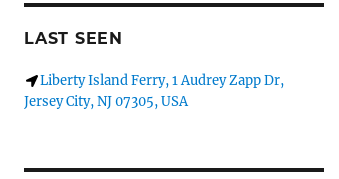
I’ve decided to take a different direction for the Bridgy plugin for WordPress. I’ve never quite been able to explain to people it doesn’t actually do anything. It’s a user interface for the Bridgy service. I’ve decided that the best thing to do is to is to change the approach radically.
Bridgy is a service that integrates with various sites…Facebook, Flickr, Twitter, Github, and sends back comments, likes, etc to the original copies of the same posts on your site. There are a few similar services I’ve integrated with. It also has a feature called Publish where it allows you to syndicate your posts to those services.
This is something of an arms race, as APIs change all the time. Sometimes, there is no official established API. Ryan Barrett, the creator of Bridgy, announced in a blog post this week that due to Facebook API changes scheduled to take effect on August 1st, the Publish features of Bridgy for Facebook would be discontinued at the same time.
I’m writing this partly to lay out my plan in my mind as I’m working on writing this now. I’ve gone through a few different versions of this idea before settling on this.
The Bridgy plugin consists of two parts: The first part is a UI that is added to the post editor that consists of a series of checkboxes, and the corresponding code that triggers the same action from a post made over Micropub. The second part was added last summer, and is basically a registration page for registering for Bridgy.
I’ve opened an issue for discussion on whether I should move the second part into the main Indieweb plugin. Newcomers to the Indieweb could install the plugin, register for Bridgy inside it, and instantly start getting backfeed from other sites.
That brings us to the first part. The checkboxes. They will need to be rewritten, if I want them to continue, for the new post editor, Gutenberg, at some point. But, I don’t just want to syndicate via Bridgy. I want to syndicate to anywhere I can or choose to integrate in, both using the WordPress post editor and Micropub.
So, I’ve decided to integrate the top level of this, the logic that gets a request for syndication from the post editor or Micropub, inside Syndication Links.
Syndication Links displays icons which link to syndicated copies of posts. You’ll see them on this post. I keep adding in integrations to other plugins as people ask. I have Mastodon Auto Post, Keyring Social Importer, Medium, Social Network Auto Poster, and a few more. And I’ll likely continue to look at plugins that syndicate to other sites, figure out where they store their data, and display it as part of this plugin.
But now, this second part will expand the plugin into this territory of being a middleman for actually syndicating content. This is similar to what I did in Simple Location, where I have a series of providers for weather, location, maps, etc. and anyone could write a plugin(though only I have so far) that adds another provider.
To start, the first provider I’ll be including will be a rewritten version of Bridgy Publish, as well as my plan to add Indienews, as both are triggered by sending a webmention to a site.
At the point that I finish the alternative with feature parity to the existing code, I will discontinue development on the separate Bridgy plugin. It will mean one less plugin to maintain. Anyone who does not want to use the new features in Syndication Links…they will be off by default to start with.
It also means that, if I wanted to, I could add native publishing support for services in future. While there are certainly no end of Twitter/Facebook/etc plugins for WordPress, none of them quite understand syndicating a favorite to Twitter doesn’t mean a new tweet, it means something else. I can continue to write integrations for other plugins, or add new providers myself.
Not saying I’m going to do that. I’m only committing to what I’ve said above.
Finally, to all of you who liked the Bridgy Publish plugin…I’m curious to hear your comments on this. Bear in mind, I built the Bridgy Publish plugin to use it, and I still never migrated myself over to it. I would like to finally leave what I am using, and this would mean I could change providers without changing interfaces if I ever add something in future.





